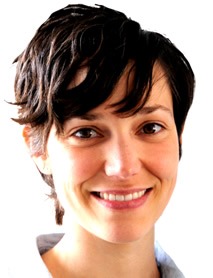
What is air pollution?
Air is polluted when it contains any extraneous entity in sufficient quantities to adversely affect the environment or the health of people exposed to it.
How is air pollution measured?
Air pollution is often measured as the mass of a pollutant per volume of air, which is a concentration.
Concentrations in a particular location depend on many factors, including activity from local emission sources, the transport of pollution from distant sources to the location where the concentration is being measured, weather and land patterns. There are many different instruments and techniques to measure air pollution.
What level of air pollution is present in the UK and how does this compare to other countries?
Of the pollutants commonly measured in the UK, the most health relevant is PM2.5. Average levels of PM2.5 outdoors in areas where most of the population lives is about 10 micrograms/m3.
Levels in large metropolitan areas are higher: average PM2.5 in London is approximately 14 micrograms/m3.
Annual average PM2.5 levels in most large cities across the globe are above the World Health Organization guideline of 10 micrograms/m3. In many cities in low and middle-income countries, PM2.5 levels are several times higher than this guideline.
During air pollution episodes, concentrations over a few days to weeks can be much higher; hundreds of micrograms/m3 is not uncommon.
How did your research into air pollution and deaths among patients admitted to hospital with heart attacks originate?
People who have survived a heart attack may be especially vulnerable to the adverse health effects of air pollution; however there are relatively few studies in this group. This motivated us to investigate the effects of air pollution in a large population of survivors of heart attacks in England and Wales.
What was previously known about the effect of air pollution on health?
There is now a large body of evidence documenting the health effects of exposure to air pollution over the course of days and longer term (e.g. years).
There is strong evidence that exposure to particulate air pollution is associated with mortality in the general population.
There is growing evidence that it is linked to the occurrence of heart disease, respiratory disease, and adverse birth outcomes.
What did your research involve?
We linked data on a large number of patients who survived hospital admission for a heart attack in England and Wales with modelled air pollution. We took into account important differences across patients in treatments received while hospitalised, smoking, and medical history and estimated the association between air pollution where the patient lived and survival.
We also investigated whether air pollution could explain, in part, the large socioeconomic differences in how well people do after having a heart attack.
What did your research find?
Our findings confirm an association between PM2.5 and increased rates of death in survivors of a heart attack.
Our findings also show that PM2.5 exposure contributes only a small amount to differences in survival after heart attack among people living in areas with different socioeconomic conditions.
How do you think these results can be explained?
There is strong supporting evidence of biological mechanisms linking air pollution and cardiovascular mortality and events.
What impact do you think this research will have?
The implication is that while reducing levels of PM2.5 will lead to increased life-expectancy and is an important public health priority, it is not likely to reduce socioeconomic inequalities in prognosis after heart attack very much.
There are likely to be many other factors that are more important than PM2.5 exposure in explaining socioeconomic inequalities in prognosis, and this requires further investigation.
Are there plans in place to reduce air pollution?
Air pollution is regulated in high-income countries like in North America and Europe. Although these countries have in place air pollution standards, there is no evidence that there is a threshold under which adverse health effects do not occur. In many low and middle income countries, air pollution is relatively unregulated and in many places very few measurements are available to monitor the situation.
At the city level, various schemes have been put in place to reduce air pollution, for example low emission zones.
What further research needs to be carried out on the health effects of air pollution?
More research on the health effects of air pollution in low and middle-income countries is needed. There is relatively little evidence from these populations, where the air pollution situation is the most severe, and where the population may be at increased risk of adverse effects of air pollution because of lower baseline health status and higher material deprivation.
What needs to be done about air pollution and its associated health risks?
Recent estimates indicate that outdoor PM2.5 is the 9th most important risk factor for death and disability worldwide. Exposure to outdoor air pollution is largely out of the control of the individual.
Decisive action is needed from local, regional, and national governments to reduce air pollution and its associated health risks.
Where can readers find more information?
For information about the UK - DEFRA http://uk-air.defra.gov.uk/air-pollution/
Globally - https://www.who.int/
About Dr Cathryn Tonne
 Cathryn Tonne is a lecturer in environmental epidemiology at the London School of Hygiene & Tropical Medicine.
Cathryn Tonne is a lecturer in environmental epidemiology at the London School of Hygiene & Tropical Medicine.
She received her doctoral degree from the Harvard School of Public Health in the USA.
She has several years experience investigating the health effects of air pollution, especially from traffic sources.
Previously, she investigated the impact of the London Congestion Charge on air pollution, health, and health inequalities. She has particular interest in socioeconomic inequalities in exposure to traffic pollutants.
Further details of her research can be found at: https://www.lshtm.ac.uk/